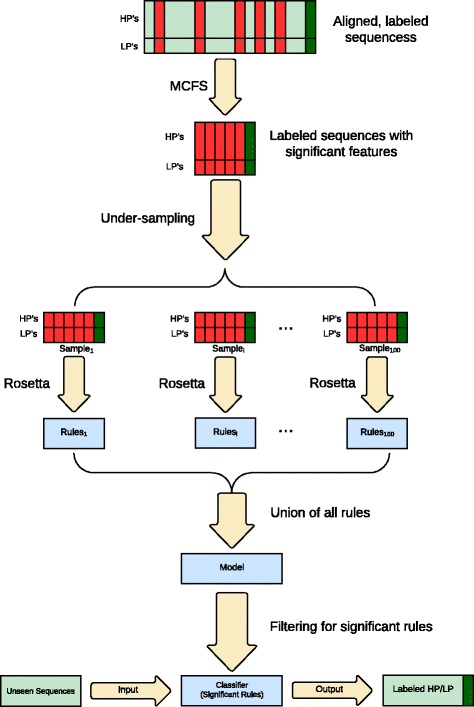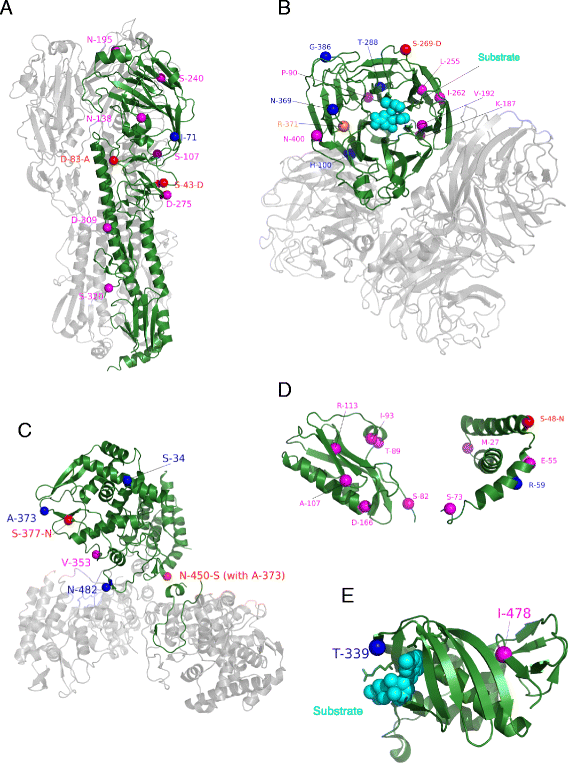A complete map of potential pathogenicity markers of avian influenza virus subtype H5 predicted from 11 expressed proteins
- PMID: 26112351
- PMCID: PMC4482282
- DOI: 10.1186/s12866-015-0465-x
A complete map of potential pathogenicity markers of avian influenza virus subtype H5 predicted from 11 expressed proteins
Abstract
Background: Polybasic cleavage sites of the hemagglutinin (HA) proteins are considered to be the most important determinants indicating virulence of the avian influenza viruses (AIV). However, evidence is accumulating that these sites alone are not sufficient to establish high pathogenicity. There need to exist other sites located on the HA protein outside the cleavage site or on the other proteins expressed by AIV that contribute to the pathogenicity.
Results: We employed rule-based computational modeling to construct a map, with high statistical significance, of amino acid (AA) residues associated to pathogenicity in 11 proteins of the H5 type viruses. We found potential markers of pathogenicity in all of the 11 proteins expressed by the H5 type of AIV. AA mutations S-43(HA1)-D, D-83(HA1)-A in HA; S-269-D, E-41-H in NA; S-48-N, K-212-N in NS1; V-166-A in M1; G-14-E in M2; K-77-R, S-377-N in NP; and Q-48-P in PB1-F2 were identified as having a potential to shift the pathogenicity from low to high. Our results suggest that the low pathogenicity is common to most of the subtypes of the H5 AIV while the high pathogenicity is specific to each subtype. The models were developed using public data and validated on new, unseen sequences.
Conclusions: Our models explicitly define a viral genetic background required for the virus to be highly pathogenic and thus confirm the hypothesis of the presence of pathogenicity markers beyond the cleavage site.
Figures



References
-
- Garten W, Klenk H-D. Cleavage activation of the influenza virus hemagglutinin and its role in pathogenesis. Avian Influenza. 2008;27:156–67. doi: 10.1159/000151618. - DOI
Publication types
MeSH terms
Substances
LinkOut - more resources
Full Text Sources
Other Literature Sources
Medical
Research Materials
Miscellaneous

